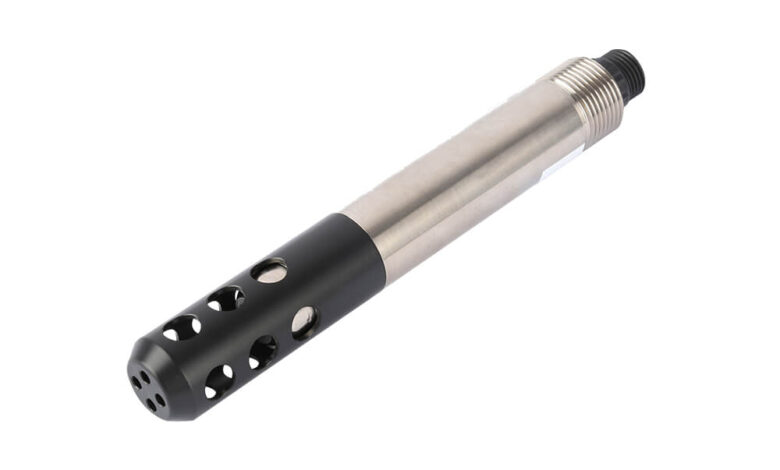Dissolved Oxygen Sensors in Aquatic Systems: Essential Tools for Environmental and Industrial Monitoring

Water is a fundamental resource for life on Earth, supporting ecosystems, agriculture, industry, and human consumption. The quality of water is a direct reflection of the health of aquatic ecosystems, and one of the most critical indicators of water quality is dissolved oxygen (DO). Oxygen in water is essential for the survival of aquatic life, including fish, invertebrates, and microorganisms. Dissolved Oxygen Sensors in Aquatic Systems Monitoring dissolved oxygen levels is essential for maintaining these ecosystems, as well as for ensuring safe water for industrial use and human consumption.
Dissolved oxygen sensors play a vital role in monitoring and maintaining the oxygen levels in water bodies. These sensors provide real-time, accurate measurements of oxygen concentration, helping to manage water quality, prevent pollution, and optimize industrial processes. This blog will explore the importance of dissolved oxygen sensors, how they work, their applications across various industries, and how they are instrumental in ensuring sustainable water management.
Why Monitoring Dissolved Oxygen Is Critical for Aquatic Life
Dissolved oxygen is the oxygen that is available in water for organisms to respire. Fish, aquatic insects, and other organisms rely on this oxygen to survive. Aquatic ecosystems are naturally balanced with oxygen levels fluctuating based on factors such as temperature, salinity, depth, and water movement. However, oxygen levels can be influenced by human activities and environmental factors, including:
-
Pollution: The discharge of organic waste or chemical contaminants into water bodies can reduce oxygen levels. Decomposing organic matter consumes oxygen, leading to oxygen depletion.
-
Eutrophication: The excessive input of nutrients, primarily nitrogen and phosphorus from agricultural runoff, leads to algal blooms that consume large amounts of oxygen as they decompose.
-
Climate Change: Warmer water holds less oxygen, and rising global temperatures can further deplete oxygen levels in aquatic ecosystems.
Aquatic organisms are sensitive to changes in dissolved oxygen levels, with many species requiring specific oxygen concentrations to thrive. For example, cold-water fish species like trout require higher levels of dissolved oxygen, while warm-water species may survive with slightly lower concentrations. If oxygen levels fall too low, it can lead to hypoxia (low oxygen) or anoxia (complete oxygen depletion), causing fish kills, the death of other organisms, and the collapse of entire ecosystems.
How Dissolved Oxygen Sensors Work
Dissolved oxygen sensors are devices that measure the amount of oxygen dissolved in water. There are two primary types of do sensor: electrochemical sensors and optical sensors. Both offer unique advantages depending on the application.
1. Electrochemical Sensors (Clark-type Sensors)
Electrochemical sensors, also called Clark-type sensors, are the most widely used dissolved oxygen sensors. These sensors work based on the principle of electrochemical reactions. They contain two electrodes: a working electrode and a reference electrode. The electrodes are separated by a semi-permeable membrane. When oxygen from the water passes through the membrane, it reacts with the electrode to produce an electrical current, which is directly proportional to the concentration of oxygen in the water.
Clark-type sensors are reliable and commonly used in various applications, including environmental monitoring, aquaculture, and water treatment. However, they require periodic maintenance, such as membrane replacement and electrode cleaning, to maintain accurate readings.
2. Optical Sensors
Optical dissolved oxygen sensors use a different technology based on the principle of fluorescence. These sensors have a coating that contains a fluorescent dye. When the dye is exposed to light, it emits a fluorescent signal that diminishes in the presence of oxygen. The intensity of the fluorescence inversely correlates with the oxygen concentration, allowing the sensor to measure the amount of oxygen in the water.
One of the significant advantages of optical sensors is that they do not suffer from the fouling and degradation that electrochemical sensors face. This makes optical sensors ideal for continuous monitoring in harsh conditions, where they can remain in the water for long periods with minimal maintenance. Optical sensors are also increasingly used in remote and unattended monitoring setups due to their reliability and ease of use.
Applications of Dissolved Oxygen Sensors
Dissolved oxygen sensors are used in various fields, including environmental monitoring, industrial applications, and research. Their ability to provide continuous, real-time data on oxygen levels makes them invaluable for maintaining water quality and ensuring the health of aquatic ecosystems.
1. Water Treatment Plants
In wastewater treatment, maintaining optimal levels of dissolved oxygen is essential for the aerobic treatment process. Aerobic bacteria are responsible for breaking down organic pollutants in wastewater, but they require oxygen to function. Dissolved oxygen sensors are used in aeration tanks to ensure that the bacteria have sufficient oxygen to carry out the breakdown of organic matter efficiently.
By continuously monitoring DO levels, treatment plants can adjust aeration systems in real-time, preventing excessive aeration that would waste energy or insufficient aeration that would result in inefficient treatment. This helps ensure that treated water meets regulatory standards for discharge and reduces energy consumption in the process.
2. Aquaculture
In aquaculture, where fish and other aquatic species are cultivated in controlled environments, dissolved oxygen levels are crucial for the health and growth of the organisms. DO sensors are used to monitor oxygen levels in fish tanks, ponds, and other aquaculture systems. If oxygen levels drop below optimal levels, fish and other species can experience stress, reduced growth, and even mortality. Continuous monitoring of oxygen concentrations helps aquaculture operators maintain an ideal environment for aquatic species, improving productivity and sustainability.
3. Environmental Monitoring
Dissolved oxygen sensors are widely used in environmental monitoring to assess the health of rivers, lakes, estuaries, and coastal waters. In areas impacted by pollution or nutrient overload, dissolved oxygen levels can drop significantly, leading to the formation of dead zones where oxygen is insufficient to support most marine life. By continuously monitoring oxygen levels in these areas, environmental agencies can detect early signs of hypoxia and take corrective actions, such as reducing nutrient inputs or implementing restoration projects.
Moreover, sensors installed in natural bodies of water help track changes over time, providing valuable data on the impacts of climate change, pollution, and other stressors on aquatic ecosystems. For instance, in areas prone to algal blooms, DO sensors can detect the oxygen depletion caused by the decomposition of algae, alerting authorities to potential ecological risks.
4. Industrial Processes
Dissolved oxygen sensors are also used in various industrial processes where oxygen plays a critical role, such as in fermentation, bioreactor systems, and chemical manufacturing. In the food and beverage industry, DO sensors help monitor the fermentation process to ensure the proper growth of yeast and bacteria. Similarly, in the biotechnology industry, maintaining appropriate oxygen levels in bioreactors is essential for optimizing the production of pharmaceuticals, biofuels, and other bioproducts.
In these industries, precise control over oxygen concentrations can lead to more efficient production processes, higher yields, and lower operating costs. DO sensors provide manufacturers with real-time data to ensure that the conditions remain optimal for microbial or chemical reactions.
5. Research and Restoration Projects
In research settings, dissolved oxygen sensors are used to study the effects of environmental changes on aquatic ecosystems. These sensors provide real-time data that help scientists understand how oxygen levels fluctuate in response to different variables, such as temperature, pollution, and human activities. This data is critical for studying the impacts of climate change on aquatic life and for assessing the effectiveness of restoration efforts, such as wetland rehabilitation or river restoration projects.
Key Benefits of Dissolved Oxygen Sensors
-
Real-time Data: Dissolved oxygen sensors provide continuous, real-time measurements, enabling immediate responses to changes in oxygen levels.
-
Enhanced Water Quality Management: By monitoring DO levels, industries and environmental agencies can take proactive measures to maintain water quality and prevent problems such as fish kills or inefficient treatment.
-
Cost Efficiency: In wastewater treatment plants and aquaculture systems, DO sensors help optimize aeration, reducing energy consumption and improving operational efficiency.
-
Environmental Protection: By detecting low oxygen levels early, DO sensors help prevent ecological damage, protect biodiversity, and maintain sustainable water ecosystems.
-
Regulatory Compliance: Many industries, including water treatment plants, are required to meet specific oxygen concentration standards for discharge. DO sensors help ensure that these regulatory requirements are consistently met.
Conclusion
Dissolved oxygen sensors are vital tools in maintaining healthy aquatic ecosystems and managing water quality. They help industries, researchers, and environmental agencies monitor oxygen levels in real time, enabling more effective water treatment, pollution control, and ecosystem management. With advancements in sensor technology, the future of DO monitoring is more accurate and reliable than ever before, paving the way for more sustainable and efficient water management practices.
By ensuring that aquatic systems maintain the proper oxygen levels, dissolved oxygen sensors contribute significantly to protecting aquatic life, optimizing industrial processes, and promoting sustainable water use. As we continue to face environmental challenges such as climate change and pollution, these sensors will remain at the forefront of efforts to safeguard our water resources for future generations.




